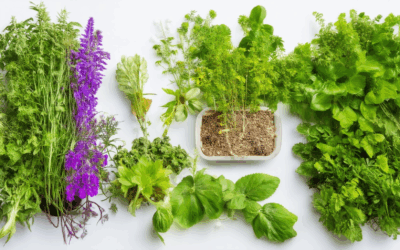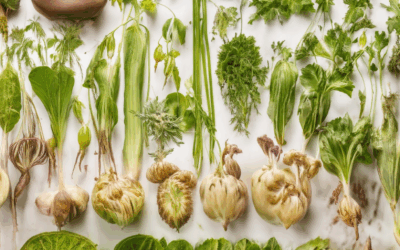Creating natural compost at home is a simple yet powerful way to contribute to sustainable living while enriching your garden or household waste management practices. Whether you’re new to composting or looking to enhance your current setup, this guide offers a comprehensive approach to producing your own compost efficiently and sustainably. From understanding the basic principles to exploring advanced techniques, we’ll walk you through everything you need to know about natural compost production. Learn how to select the right materials, maintain your compost pile, and maximize its benefits for your plants and the environment. With practical tips and insights, this guide will empower you to create rich, nutrient-dense compost right at home, making it an essential resource for eco-conscious individuals and gardeners alike.
Key Takeaways:
- Effortless Composting: Opt for the Pile Method for minimal effort, layering organic waste with brown materials and covering with soil to suppress pests and accelerate decomposition.
- Location Strategy: Choose a partially shaded spot to balance heat and moisture, ideal for preventing overheating and mold growth while retaining necessary moisture.
- Vegetable Scrap Management: Compost safe scraps like carrot peels and cucumber slices, avoiding citrus and potato scraps near plants to prevent damage and rot. Consider alternative disposal methods like chicken feeding if preferred.
By implementing these strategies, you can effectively create natural compost with ease and sustainability.
How to Make Compost Naturally
Composting is an eco-friendly process that transforms organic waste into valuable material for your garden. Here’s a step-by-step guide to creating a successful compost pile:
Materials Needed
- Kitchen scraps (fruit peels, vegetable trimmings)
- Yard waste (leaves, grass clippings)
- Newspaper or cardboard
- Manure or worm castings (optional)
Location
Choose a spot that receives sunlight and has easy access to water. A balcony, patio, or garden area works well. Consider using a compost bin or pile for containment and to deter pests.
Setting Up Your Pile
- Layering: Start with a layer of dampened cardboard or newspaper to retain moisture. Add a mix of organic materials, alternating between green (kitchen scraps) and brown (leaves, cardboard) materials.
- Additives: Sprinkle manure or worm castings to accelerate decomposition. Avoid meats, dairy, and fatty foods to prevent pests and odors.
- Watering: Moisten the pile thoroughly but avoid making it soggy. Regular watering helps maintain the right conditions for bacteria.
Composting Methods
Choose between cold or hot composting:
- Cold Composting: Ideal for beginners, this method relies on natural breakdown over time. Materials decompose slowly, requiring minimal maintenance.
- Hot Composting: Speeds up decomposition using earthworms or specialized organisms. Requires more attention and resources, such as adding bedding and monitoring conditions.
Maintenance
- Check the pile weekly to ensure it stays moist and aerated. Turn it over to redistribute materials and promote airflow.
- Protect the pile from pests by sprinkling natural repellents like cinnamon or cloves.
Using Your Compost
Apply compost to your garden beds as a fertilizer. It improves soil structure, enriches nutrients, and promotes plant growth. Use it 1-2 inches thick, working it into the soil.
Benefits of Composting
- Reduces landfill waste and lowers disposal costs.
- Sequesters carbon, contributing to climate change mitigation.
- Sustainable waste management aligns with eco-friendly practices.
Tools Needed
- Shovel or rake for turning the pile
- Wheelbarrow for transporting materials
Tips and Considerations
- Avoid adding meat, dairy, and fatty foods to prevent pests and odors.
- Keep the pile covered to retain warmth and reduce odor.
- Consider the time commitment; regular maintenance is key to success.
By following these steps, you can create rich, nutrient-dense compost that enhances your garden. Embrace this sustainable practice and contribute to a healthier planet!
What Are the 4 Ingredients Needed to Make Compost?
To successfully make compost, you need four key ingredients that work synergistically to facilitate the decomposition process. These ingredients are:
- Carbon-Rich Materials : Provide the essential structure and energy source for composting. Examples include leaves, grass clippings, and wood chips.
- Nitrogen-Rich Materials : Support microbial activity and plant growth. Common examples are vegetable scraps, coffee grounds, and eggshells.
- Oxygen : Ensures aerobic conditions necessary for efficient decomposition. Proper mixing and turning the pile promotes airflow.
- Water : Maintains the optimal moisture level for microbial activity. Too much or too little can hinder the composting process.
By incorporating these four elements into your composting efforts, you can create a balanced environment that encourages effective decomposition, resulting in nutrient-rich compost for your garden.
Disadvantages of Composting
- The process can attract pests such as flies and rodents, which may contaminate the compost pile.
- Composting can produce an unpleasant odor, particularly during warm weather or when dealing with organic waste like meat or dairy products.
- It may draw unwanted attention from wildlife, as compost piles often serve as a food source for animals.
- Composting requires regular maintenance and turning of the pile, which can be labor-intensive, especially for large quantities of waste.
- Some materials, like certain types of meat or dairy, should not be composted due to health concerns, which can limit its versatility.
For more detailed information on composting and its benefits, visit our composting benefits page or explore our comprehensive guide on compost methods .
The Laziest Way to Compost
Composting doesn’t have to be a labor-intensive task. Here are some of the easiest methods to get started:
- Pile Method: Simply gather your organic waste in a corner of your yard or garden. This method is the most relaxed as it requires minimal effort once set up. However, it may take longer to decompose fully and could attract pests if not managed properly.
- Compost Bin: Using a compostable bin or container can help keep your compost contained and reduce pests and odors. While it still requires regular maintenance, it offers a cleaner and more controlled environment for your compost.
- Vermiculture: Worm composting is a unique and efficient method. Red wiggler worms quickly break down organic material, making it a fast and effective way to compost. This method requires some initial setup but is relatively low-maintenance once established.
- Aerated Compost Tumbler: Electric tumblers or aerated compost bins spin continuously to mix materials and speed up decomposition. While they require power and initial assembly, they offer a hands-off approach once set up.
Choosing the right method depends on your lifestyle and location. For true laziness, the simplest approach is often the pile method, though it may take longer and require occasional monitoring to prevent pests and ensure proper decomposition.
Is It Better to Compost in the Sun or Shade?
Composting is an eco-friendly way to recycle organic waste, but choosing the right location can significantly affect its success. While both sunny and shaded areas have their benefits, each has unique advantages depending on your specific situation.
- Sun:
- Heating: Sunlight provides warmth, which accelerates compost decomposition due to the activity of bacteria and fungi.
- Drying: Excess moisture can be a problem, requiring regular watering to maintain the right consistency.
- Airflow: Sunlight encourages airflow, which is crucial for breaking down greasy or fatty materials effectively.
- Shade:
- Cooling: Shade prevents overheating, protecting compost from extreme temperatures that could harm beneficial microorganisms.
- Moisture Retention: Shaded areas help retain moisture, reducing the need for frequent watering and preventing mold growth.
- Material Consideration: Some materials may decompose more efficiently in shaded environments, though this varies by material type.
Ultimately, the choice depends on your climate and the specific materials you’re composting. In warmer regions, shade can prevent overheating, while in cooler areas, sunlight helps maintain the ideal temperature for composting. Find a spot that offers partial shade or natural protection to balance warmth and moisture retention.
Can I Just Throw Vegetable Scraps in My Garden?
Yes, you can dispose of vegetable scraps in your garden, but it’s important to do so responsibly and safely. Here’s a guide to effectively managing vegetable scraps:
- Composting: Most vegetable scraps can be composted to enrich your soil. Suitable scraps include carrot peels, cucumber slices, zucchini shreds, and tomato stems. Avoid composting citrus peels, as they can harm plants due to acidity.
- Avoid Harmful Scraps: Certain scraps may pose risks. Potato scraps can cause potato rot if left in damp conditions. Onions and garlic emit strong odors that may deter wildlife but won’t harm plants. However, some scraps, like citrus peels, can damage plants, so discard them separately.
- Prevent Pest Attraction: While vegetable scraps can attract pests like aphids or slugs, composting them can actually draw beneficial organisms that prey on these pests. Proper composting reduces pest attraction.
- Alternative Disposal Methods: If you prefer not to compost, consider feeding vegetable scraps to chickens or pigs, provided they are safe for their consumption. Avoid feeding citrus peels or onions, as these can be harmful to animals.
- Home Use: Some people use vegetable scraps in smoothies or soups. However, this is less efficient than composting for garden use.
Always check local regulations and ensure that any method you choose is environmentally sustainable. Properly disposing of vegetable scraps supports eco-friendly gardening practices and prevents potential garden hazards.








0 Comments